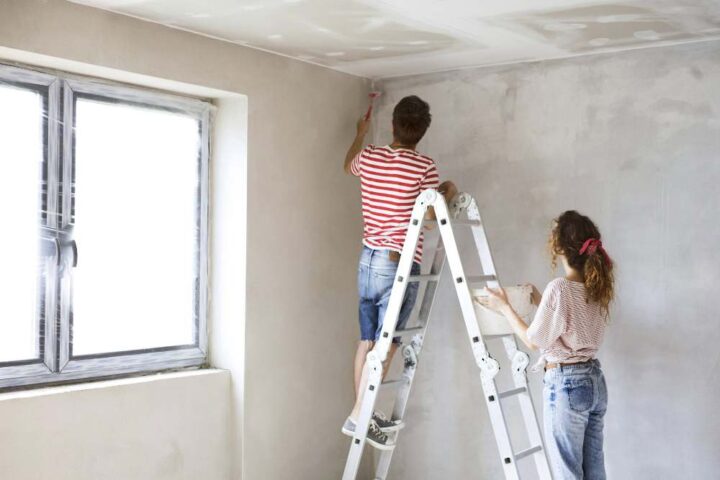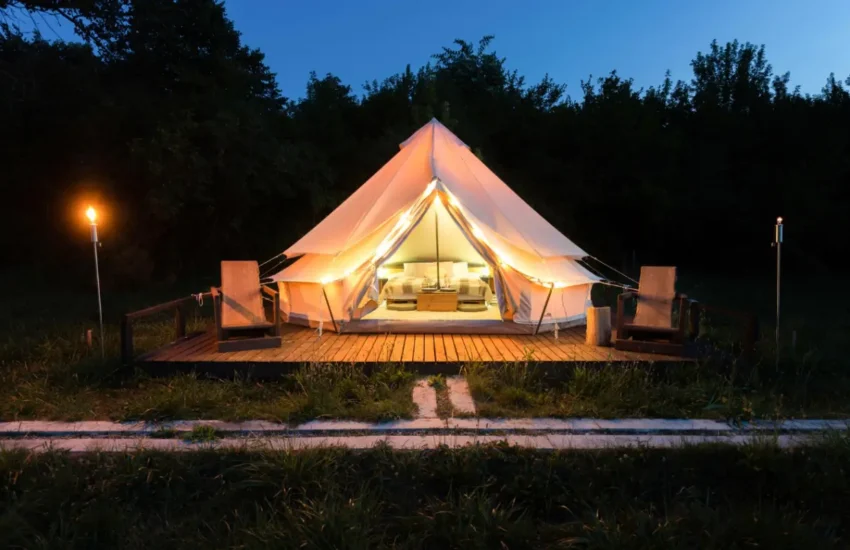Interior vs. Exterior Painting: What the Pros Do Differently
Painting might seem simple at first glance. Dip the brush, roll the wall, let it dry. But professionals treat interior and exterior jobs like two entirely different worlds. That’s because they are.
Different environments, different materials, and different challenges all call for their own approach. If you’re wondering what really separates the two, and how the experts handle each one with care and precision, here’s the inside scoop.

It Starts with the Surface
Interior walls usually come ready to paint. Most are smooth, made from plasterboard or previously painted surfaces that need only light prep. Exterior walls are another story. Exterior surfaces deal with weather, dirt, and wear that interior ones don’t. Painters often have to work with:
- Brick or render, which may require sealing or patching first
- Timber cladding, which needs sanding, priming, and sometimes repairing
- Metal surfaces, which can rust and need specific primers
Preparation for outdoor painting almost always takes more time. There’s scraping, cleaning, filling, sealing, and often pressure washing before a brush even touches the wall.
The Paint Itself Isn’t the Same
You can’t use the same paint inside and out. Professional painters Richmond know exactly which types are designed for each environment. Interior paint is made to be easy to clean, low in odour, and smooth in finish. It’s formulated to resist scuffs, stains, and general wear, not rain or sun. It’s also often available in more varied finishes, like matte, satin, or gloss.
Exterior paint, on the other hand, is built to survive. It must cope with heat, moisture, UV rays, and sometimes even salt air or pollution. It needs to be flexible to handle expanding and contracting surfaces. And it must be more durable, even if that means sacrificing a bit of the smooth, delicate finish you might want indoors.
Lighting Affects Everything
Professionals know how much lighting changes colour. Interior lighting tends to be soft and artificial, which can make colours appear warmer or cooler. A colour that looks perfect in a store might look completely different under your ceiling light.
Outside, the sun is the boss. Natural light is strong and shifts throughout the day, which changes how colours appear on a façade. Pros will test patches at different times of day and under different weather conditions before committing.
This is why painting a house exterior in full sun can actually be a bad idea. Heat dries the paint too quickly and can affect how evenly it adheres. Timing and weather play a huge role outdoors.
Timing and Conditions Matter More Outdoors
Indoor painting can be done year-round. Weather rarely gets in the way unless you’re dealing with humidity or extreme cold.
But exterior painting is all about timing. Professionals check the forecast. They avoid painting right before rain or when temperatures swing wildly between day and night. Both can affect drying time, adhesion, and overall finish.
Wind is another factor. It can blow dust and debris straight onto a freshly painted surface, or dry paint unevenly. Experienced painters wait for the right window before they begin.
Tools Get Upgraded Outside
You might not think much about the tools, but professionals do. Interior painting usually uses standard rollers, brushes, painter’s tape, and maybe a trim tool. Clean lines, tidy edges, and smooth rolling are the priorities.
Exterior painting, though, often calls for heavier-duty equipment:
- Larger rollers and extension poles – to cover broader surfaces
- Sprayers – especially for fences, large walls, or textured surfaces
- Ladders, scaffolding, or harnesses – for safe access to second storeys
- Caulking guns and sealants – to fill gaps before painting
Every job requires a tailored toolkit. What works indoors won’t always cut it outside.
Safety Rules Change Completely
Indoors, safety is mostly about ventilation and managing fumes. Sometimes, drop cloths and protective gear are enough.
Working outside adds height, weather, and surface hazards. Professionals use:
- Scaffolding or elevated work platforms – to reach high walls safely
- Sun protection and weather-appropriate clothing – to handle long hours outdoors
- Fall protection gear – when working on roofs or balconies
- Surface stability checks – to ensure paint adheres to solid material
This isn’t something to take lightly. Professionals are trained for it, and they never skip safety checks.
Touch-Ups and Maintenance
Inside, paint jobs usually last several years with minimal maintenance. Marks from shoes or furniture might need spot cleaning or the occasional touch-up, but overall, a well-painted room can hold up nicely.
Exterior paint is more exposed. Rain, sun, wind, and pollution all speed up wear and tear. Professionals choose high-quality paints that can stand up to the elements, but they’ll still recommend a maintenance schedule. That might include:
- Regular washing to remove dirt and mildew
- Checking for flaking or bubbling, which could signal deeper damage
- Repainting every 5 to 10 years, depending on conditions
What works indoors won’t last outside, and pros plan accordingly.
Colour Choices Aren’t Just About Looks
Choosing colours inside is mostly about style. Soft neutrals, bold accents, or moody tones can all work, depending on the room and lighting.
Outdoor colour choices come with added pressure. The colour must complement the architectural style and fit in with the surrounding environment. But it also has to perform well in sunlight, rain, and over time.
Professionals consider more than just what looks good on a colour card. They think about how it will fade, whether it will show dirt or dust, and how it interacts with other materials like stone, timber, or roofing.
What It Really Comes Down To
There’s a reason the pros treat interior and exterior painting so differently. The environment, materials, risks, and expectations all shift depending on whether you’re inside or outside.
Painting a bedroom and painting a front façade might both involve rollers and brushes, but that’s about where the similarity ends.
If you’re tackling a project yourself, understanding these differences can save you from a lot of headaches. If you’re hiring someone, knowing what the job demands helps you ask the right questions.
Either way, painting is one of the best ways to completely change a space, as long as it’s done right.


